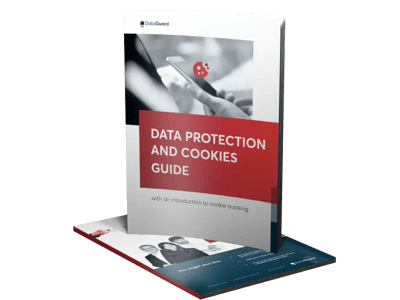How can marketing teams truly connect with people in a world where the consent management and preference goalposts are moving? Discover why consent management is the way to win the hearts and minds of your customers and how to get it right in your organisation. Let’s dive in.
In this blog post, we'll cover:
- Consent management in a changing consumer landscape
- The new privacy paradox and what it means for consent management platforms
- What is consent management?
- Why should marketing leaders care about consent management platforms?
- Okay, but what do the regulations say about consent management?
- Talk to me about the risks and benefits…
- Interesting. What about some of the consent management best practices?
- How much do consent management platforms cost?
- I take a long-term view: what does the future hold for consent management?
- FAQs
Consent management is changing
The world of consent and preference management continues to evolve. Twelve percent of website visitors now regularly change all the cookie settings when they land on a website. And twenty percent of them change at least some cookie settings.
These site visitors read your pop-up. They ask themselves if they want you to track them and see your ads (probably not). They consider if they want the same from your partners (definitely not).
Then they click ‘reject all’ in ever-increasing numbers.
And it’s not just about cookie management or opt-ins and opt-outs. The trend extends into wider consent and preference management issues like first-party data and way beyond the pixel, tracking and advertising ‘cookiepocolypse’ or how you collect and manage other information like zero-party data.
The research shows fifty-four percent of people in the UK are ‘aware of GDPR and what it means’.¹ In other words, over half of the people visiting your site are more aware than ever of data protection laws.
"Customers understand the value of data exchange in the modern marketplace more fully. And they want bigger and better incentives to give you their data."
So what? Well for one, it means customers are beginning to understand the value of data exchange in the modern marketplace more fully. They want bigger and better incentives to give you their data.
They’re more likely to lose trust and stop visiting your site if you don’t make choosing preferences easy or – even worse - you ignore preferences and hit people with the wrong message at a bad time.
Consent management and the privacy paradox
Contrary customer moods are already making it tough for marketing teams trying to connect with (and sell to) people. On one hand, eighty-three percent of customers say they’d be more likely buy things from companies offering them personalised experiences.²
And on the other, seventy-nine percent of them say they absolutely and positively do not trust organisations like yours to do the right thing with their data.³
So how do you pay attention to the forty-eight percent of people who say they’d trust you more if you limited how much data you asked for? What about the people who bounce off your site the minute you make it difficult to set preferences? And what on earth will you do about the thirty-five percent of people who’ve already disabled cookies or used a service to allow anonymous browsing in the last month?
We call this the privacy paradox - and it’s changing the way marketing teams will do their jobs forever.
Learn more about the privacy paradox
Want to know more about the privacy paradox? We invited an expert panel to discuss the changing face of consent management and what it could mean for marketing professionals. Watch this video to see what we covered.
What is consent management?
We’re about to explore how the privacy paradox is changing the marketing game (and how you can stay ahead).
But first, three quick definitions so we’re all on the same page.
- Consent Management
This is the systematic process you apply to collecting, tracking and managing consent from visitors to your website. It's the way you compliantly collect first-party data - that most valuable of commodities. And it also refers to how you store and process this personal data.
- Cookie Management
Whether it’s third-party or first-party cookies, cookie consent makes sure your site doesn’t set unnecessary cookies before a visitor gives consent. Getting this right is really important for transparency and following data protection regulations.
- Preference Management
Preference management is often an add-on feature of modern consent management tools. Visitors to your site can use a preference centre to subscribe only to email newsletters that interest them, for example. This is a good thing. It can help you send hyper relevant marketing material and build better customer and prospect relationships.
Why should marketing leaders care about consent management?
We’re glad you asked. Modern privacy regulations will cover the personal data of seventy-five percent of the global population by the end of 2024, so there’s a whole bunch of reasons for marketing teams to stay sharp. Staying compliant is an obvious one. No marketing leader wants a hefty GDPR or CCPA fine because of a marketing campaign.
But there are more tangible reasons CMOs should care about Consent and Preference Management (CPM). Reasons that can directly affect the success of your campaigns and your KPIs. Here are just five of them.
1. Brand and reputation
Trust is the ballgame when it comes to marketing. It's what transforms a first-time website visitor into a lifelong advocate of your brand. But there’s a twist. In the digital age, trust is more fragile than ever. One wrong move, one hint of impropriety with personal data, and that trust can shatter faster than you can say "unsubscribe."
By prioritising consent management, you're essentially telling your customers, "Hey, your privacy matters to us. We're not here to spam you or sell your data to the highest bidder. We're here to build a relationship based on respect and transparency."
“That trust is the secret sauce that boosts loyalty, encourages repeat business, and fosters positive word-of-mouth – the holy grail of marketing outcomes.”
It's like asking permission before you borrow something from a friend. Sure, it's a small gesture, but it speaks volumes about your character. And in the world of marketing, character counts for a lot.
When customers see that you're committed to respecting their preferences and protecting their data, their trust in your brand grows. That trust is the secret sauce that boosts loyalty, encourages repeat business, and fosters positive word-of-mouth – the holy grail of marketing outcomes.
2. Taking care of (digital) touchpoints
From the casual scroll through your social media feeds to the deep dive into your latest blog post, every click and every swipe is a chance for marketing teams to connect with prospects and customers.
For marketing leaders, understanding and optimising these digital touchpoints means crafting personalised and meaningful interactions that respect user choice and privacy. That means moving beyond the transactional and fostering a relationship built on trust and value exchange.
In this context, consent management can guide how you collect, use and store data at every digital touchpoint. By transparently managing consent and preferences, you demonstrate to your customers that you value their privacy and autonomy.
Imagine every digital interaction—a website visit, a newsletter open, an app notification—as a step in the never-ending slow dance with your target audience. By weaving consent and preference management into the fabric of every digital touchpoint you’re helping guide people across the floor with a trusted partner (without stepping on their toes).
Do that, and you're complying with laws and winning the hearts and minds of your customers by respecting their digital boundaries and preferences. Speaking of which...
3. Staying compliant
Gone are the days when you could just blast out emails to anyone and everyone. In today's privacy-conscious world, consent isn't just a nice-to-have, it's the central tenet of any email marketing strategy. Why? Because getting consent isn't just about avoiding the legal hot water that comes with privacy laws like GDPR or CCPA (though that's a pretty good reason on its own). It's about building trust with your audience.
Managing consent properly helps you avoid spamming uninterested parties and sharpens your targeting. It means your emails land in the inboxes of people who genuinely want to hear from your brand. Plus, it keeps your brand reputation shiny and bright and shows you respect user preferences and privacy.
4. Personalised marketing campaigns...
Making your marketing personal is all about cutting through the noise and speaking directly to your audience. You want people to feel like you're not just another faceless brand, but a friend who truly gets them.
By weaving consent management into the fabric of personalised campaigns, you can unlock significantly better marketing outcomes. And it’s not enough to just use someone’s first name in an email anymore. It’s more important to harness the power of consensual data to deliver messages and offers that resonate on a personal level.
"It’s not just about using someone’s first name in an email anymore. It’s about harnessing the power of consensual data to deliver messages and offers that resonate on a personal level."
Personalisation based on consent doesn’t just drive better marketing outcomes. It transforms the way your audience perceives and interacts with your brand, and it can turn casual browsers into loyal customers and brand evangelists. Who doesn’t want that?
5... Better results
In a time when every brand is vying for attention, consent management and personalisation aren’t tools, they're secret weapons. They allow you to optimise your marketing spend by ensuring that people don’t just see your every ad, email, and content piece - they welcome it.
This relevance boosts engagement, minimises waste and amplifies your returns - making your marketing budget work harder and smarter. In the end, optimised marketing spend isn't ‘spending less’ it's ‘spending right’.
Consent Management: What do the regulations say?
When it comes to the General Data Protection Regulations (GDPR), we’re talking articles 6 and 7. And before you roll your eyes and skip this section, don’t! We’ll be quick and to the point. Besides, it’s important...
GDPR acknowledges six possible authorisations for data processing. You can find them in in Article 6, paragraph 1. These are:
- Consent
- Contract
- Legal obligations
- Protection of vital interests
- Public interest or exercise of public
- Legitimate interest that demonstrably outweighs the interests of the data subjects
Technically, only two of these are relevant for marketing teams - legitimate interest and consent – so let’s dig into what these mean for you. But let’s also consider the GDPR regulations from your customer’s viewpoint.
Proving consent
As the data controller, you’ll need to prove that the data subject (your site visitor) has given consent for you to process their personal data.
Your customer expects this. But they also don’t want to have to give consent every single time. If you make people give consent repeatedly for the same data processing it disrupts your visitors and can increase abandonment rates.
Comprehension of consent
You need to make it understandable for people. That means your consent capture needs to be user-friendly and in clear and simple language.
Your customer wants this, too. But they also want high levels of control and have less tolerance for a lack of transparency. Anecdotal evidence suggests that consent collection correlates with higher bounce rates, so transparency and ease of use are the watchwords.
Consent withdrawal
Folks change their mind. If they do, you need to enable them to withdraw their consent at any time. In short, that means your site visitors expect you to get the balance of “asking too often” and “not enough control” just right.
And what happens if you don’t? Read why Amazon’s 2021 GDPR fine still matters...
What are consent management risks and benefits?
Get consent management right and you can reap tangible rewards that can improve your results and help smash your targets. Get it wrong and you face fines and losing ground to competitors who are thinking more creatively than you.
As we’ve seen, the marketing game is changing in a big way. Customers don’t want to be spammed any more. They don’t like being stalked. And, no, right now is NOT a good time to talk about that product demo...
And, as with any disruptive change, there’ll be winners and losers. The companies that move first and nail their compliance and preference management will win bigger than those that don’t. Great brands will deliver the right message to the right people at the right time. Lesser brands will continue to spam their database using outdated marketing practices and poorly targeted campaigns.
And the key to success in this brave new world? Consent management platforms and better consent, cookie and preference management.
Benefits – aka The CMP Winners
As a hardened team of professionals out and about in the market, getting your consent management right can boost performance and help you win.
Personalisation and relevance
People buy people, right? So, talk to them like you know who they are and know what they like. It’s not only more engaging, but it can significantly drive higher conversion rates as customers are more likely to respond positively to content tailored to their interests and needs.
Data-driven insights
Robust consent management processes give marketers access to valuable data about their audience's preferences and behaviours. You can use this to fine tune your tactics, make your campaign messaging ping, and make better decisions about where to spend your marketing money.
Trust and Loyalty
Like we said, people are increasingly concerned about their privacy and the use of their personal data. So, get ahead of it by prioritising consent and preference management. Just like that, your brand is signalling to the world that you respect user privacy, which in turn builds trust. And with great trust comes great customer loyalty...
Risks – aka the CMP losers
On the flip side, getting it wrong can hit you where it hurts. Particularly if you look after some of the big ticket (and harder to define) items like brand, awareness and loyalty.
Legal non-compliance
The big one, let’s face it. In an era of GDPR and other regulations, the absence of a solid a conmsent management platform and preference framework is a risky business. For CMOs and other marketing leaders, navigating these regulations is a high-stakes gamble. Without proper consent and preference management, your company may unknowingly violate the rules. This could lead to legal penalties, fines, and reputational damage, as well as potential lawsuits from affected individuals or regulatory bodies. Nobody wants that on their scorecard...
Lower efficiency and cost-effectiveness
Without precise targeting enabled by effective use of consent management platforms, your marketing efforts won’t be as cost-effective. Simple as that. Throwing your dwindling marketing budget at broad, unsegmented campaigns is a sure-fire way to miss your audience and that means higher costs, subpar performance and lower ROI. Try explaining that to your boss...
Poor customer experience and bad branding
In a world where every business is “customer-obsessed,” it’s interesting to see some organisations actively trying to make the customer experience as disjointed and frustrating as they can. Because whenever you send a customer an irrelevant communication, or you reach out to them via an undesired channel, you’re increasing the likelihood that you upset them. Cue: brand disengagement and increased opt-outs.
You fought hard to build that relationship with your customers. Don't blow it up for the sake of a flash sale on an end-of-line product your customer doesn’t know or care about.
Watch the video
Learn how to accelerate your growth with tailor-made communications and consent management.
What are the consent management best practices?
Wherever you are on the development of a consent management process in your business, here are some best practices when using a consent management platform.
Gathering, managing, and respecting user preferences and consent
1. Put the customer first
We know you want people to accept all cookies. But they know it too. Make it easy to opt-out and prevent people from rage-quitting your website at the first hurdle.
2. Transparency and clarity
Ensure that your consent forms are clear, concise, and easily understandable. Avoid legal jargon that might confuse people.
3. Granular options
Offer users control over what types of communications you can send and how you send them. It means you’re buttoned up legally, and you're keeping the customer satisfied.
4. Regular updates and audits
It’s not a one and done. Regularly review and update your consent mechanisms to reflect any changes in marketing strategies or compliance requirements. And audit can also help you spot any gaps in your consent management process.
5. Seamless integration
People should be able to access and change their preferences easily. So, make sure they can.
Implementing consent management best practices in marketing campaigns
1. Segmentation based on consent
Use the consent data to segment your audience based on their preferences so you can create more targeted and relevant marketing campaigns.
2. Preference-based personalisation
Leverage user preferences to personalise content, offers, and communications. This will help you engage people with the right messages at the right time and boost your conversion rates.
3. Feedback loops
Feedback is a gift, etc. Build a way to gather feedback on user preferences and consent. Use it to fine tune and adjust your marketing strategies and your campaign materials.
How much does consent management cost?
Would it annoy you if we said... it depends? The pricing for consent and preference tools varies widely based on features, scale, and customisation options. Some tools offer basic versions for free, while premium services can range from a few hundred to several thousand US dollars a year. Pricing often depends on the number of visitors to your website, the number of domains you have and the level of support you need.
For accurate pricing, get in touch with your preferred consent or preference management supplier.
What are the future trends in consent management?
So, that’s where we are now. But where will we be in the next few years? Here are three of the hottest trends we expect to see in the consent, preference and cookie management space in the near future.
1. AI and consent management evolution
Set to change the way big businesses handle user data and privacy in some pretty fundamental ways. From enhanced user experience, greater personalisation and predictive analytics, marketing teams can expect new ways to build and execute more effective campaigns.
AI tools might suggest consent settings based on a user's past interactions, making the consent process more user-friendly and increasing the likelihood of consent being given. Predictive analytics will help you to anticipate changes in consent rates or adjust your strategy more quickly.
2. Data ethics as a competitive advantage
Customers expect you to treat their data with respect and fairness. Society increasingly expects the same. As forward-thinking organisations already align their corporate social responsibilities with their company values, ethics and to how go to market, we expect data privacy will go the same way.
Data ethics is all about the responsible and principled approach to collecting, managing, and using data. And as data becomes central to business strategies, business leaders will increasingly view ethical practices as a competitive differentiator that will help foster trust and loyalty among customers (and broader society).
Is data privacy not part of your Environmental, Social and Governance strategy yet? It should be...
3. Consent management goes global
Universal consent frameworks continue to emerge as a response to the complexity of global data privacy regulations. They aim to standardize consent mechanisms across different jurisdictions, simplifying compliance for businesses and enhancing transparency for users.
In the future, consent platforms and consent management is likely to become more integrated with these frameworks, leveraging technologies like blockchain for immutable consent records and AI for personalised consent experiences. Why? A more privacy-centric web will respect user preferences across platforms, improve trust and help make the conversations you have with your customers even more streamlined.
Frequently asked questions

What is a consent management tool?
A consent management tool is a technology solution that helps businesses collect, store, and manage user consent preferences in compliance with privacy laws.

What is the consent management strategy?
A consent management strategy involves defining how an organisation will handle user consents, including collection, storage, and utilization, to comply with legal requirements and respect user preferences.

What is the consent management requirement?
Consent management requirement refers to the legal obligation for organizations to obtain and manage user consent for data processing activities in accordance with privacy regulations.

What are the consent requirements UK?
In the UK, consent must be freely given, specific, informed, and unambiguous, as outlined in the GDPR and the Data Protection Act 2018.

Why do I need a consent management platform?
A consent management platform is essential for ensuring your business's data processing activities are compliant with privacy laws and for building trust with your users by respecting their data preferences.

What are the requirements for consent under the GDPR?
Under the GDPR, consent must be freely given, specific, informed, unambiguous, and demonstrable through a clear affirmative action by the data subject.

What is a requirement for consent to be given under the GDPR?
The GDPR requires that consent be explicit for data considered sensitive, and it must be possible to withdraw consent easily at any time.

Is consent always required by GDPR?
No, GDPR provides other lawful bases for processing personal data, such as contract performance, legal obligations, vital interests, public task, or legitimate interests, where consent is not necessary.

Why is consent important in the GDPR?
Consent is crucial in the GDPR as it empowers individuals to control the processing of their personal data, enhancing privacy rights and protections.

Can personal data be collected without consent?
Yes, personal data can be collected without consent if it falls under another lawful basis for processing, such as contractual necessity or legal obligations.

When can you share data without consent?
Data can be shared without consent if it's necessary for compliance with a legal obligation, for the performance of a contract, to protect vital interests, for public interest, or under legitimate interests assessed by the data controller.
Disclaimer: Check the relevant sections of the GDPR for specific advice ,or speak to an expert.


Data Protection and Cookies (+ Checklist)
Data privacy compliant cookie management and tracking
Download now








